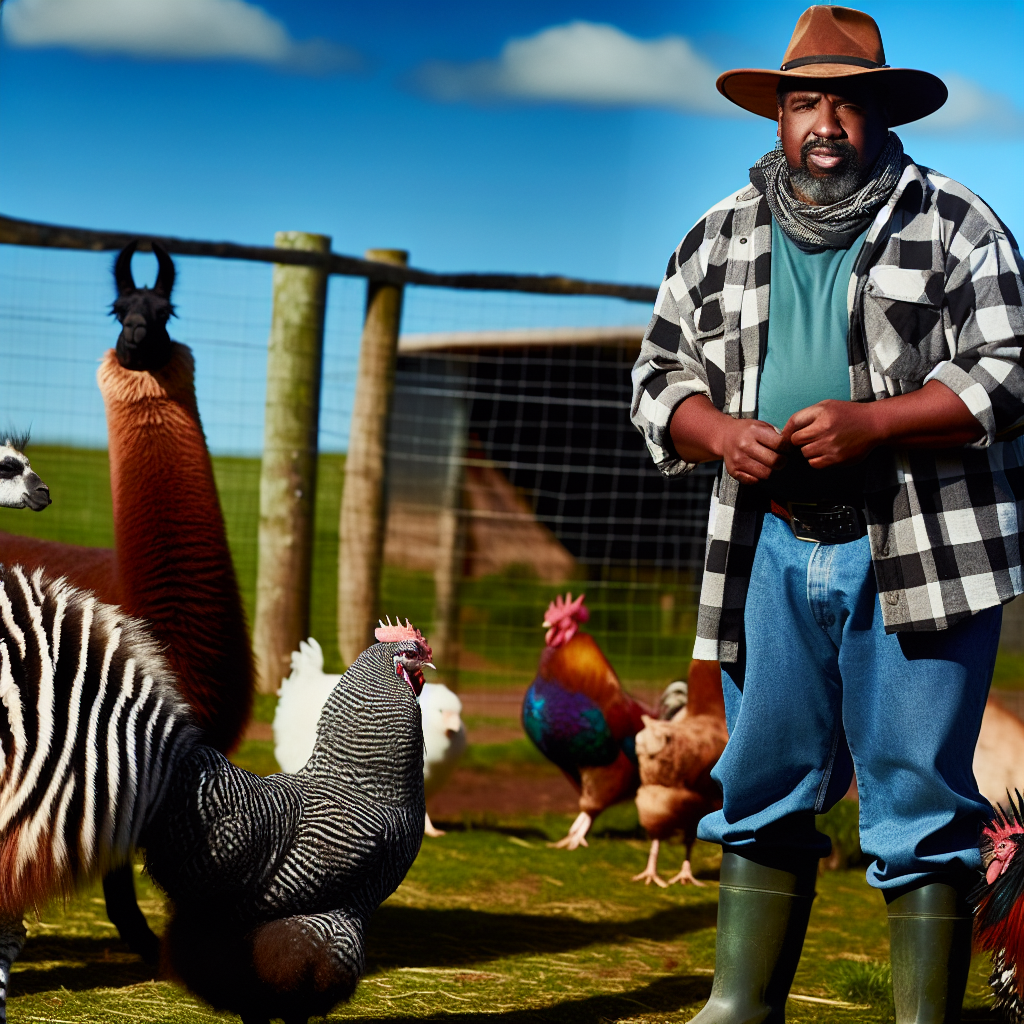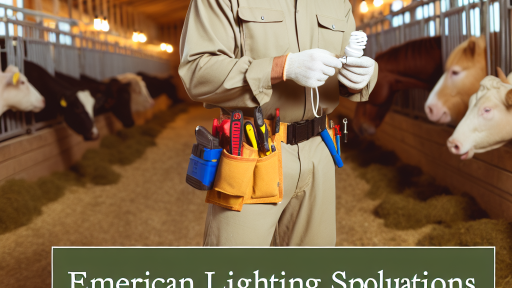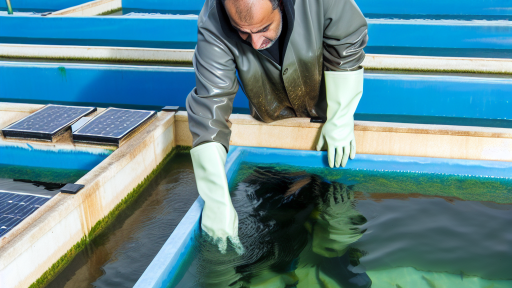Introduction to Exotic Livestock
Exotic livestock includes animals not commonly found in traditional farming.
These species can offer unique opportunities for farmers and breeders.
Understanding breeding techniques for exotic animals is crucial in this context.
As interest in exotic livestock grows, effective breeding methods become essential.
Breeding techniques ensure genetic diversity and improved animal quality.
Importance of Breeding Techniques
Breeding techniques help maintain the health and vitality of exotic livestock.
Good breeding practices enhance desirable traits in offspring.
These traits often include productivity, adaptability, and resilience.
Moreover, proper breeding strategies can prevent genetic bottlenecks.
Enhancing Genetic Diversity
Genetic diversity is vital for the stability of exotic livestock populations.
Diverse gene pools lead to healthier animals capable of adapting to environmental changes.
Moreover, breeding programs that emphasize genetic variation are more successful.
This growth in diversity also assists in disease resistance among livestock.
Improving Profitability
Implementing effective breeding techniques can enhance livestock profitability.
Higher-quality animals often lead to better marketability and prices.
Transform Your Agribusiness
Unlock your farm's potential with expert advice tailored to your needs. Get actionable steps that drive real results.
Get StartedAdditionally, sound breeding practices can result in higher yield rates.
Farmers benefit from increased production without significantly enlarging their operations.
Fostering Sustainable Practices
Breeding techniques can contribute to sustainable livestock farming.
By selecting traits that require fewer resources, sustainability improves.
Examples include selecting animals that thrive on less feed or water.
This focus on resource efficiency benefits the environment and profitability.
Overview of Traditional Breeding Methods for Exotic Livestock
Understanding Traditional Breeding
Traditional breeding involves selecting animals based on specific traits.
Breeders aim to enhance desirable characteristics in livestock.
This method has been used for generations across various species.
Common traits include size, color, and reproductive efficiency.
Inbreeding and Outbreeding
Inbreeding involves mating closely related individuals.
This technique can produce uniform traits but risks genetic defects.
Outbreeding promotes genetic diversity by mating unrelated individuals.
This promotes hybrid vigor and increases resilience in populations.
Selection Process
The selection process is crucial in traditional breeding.
Breeders evaluate animals based on performance and phenotype.
They focus on health, productivity, and adaptability to the environment.
This process requires careful observation and record-keeping.
Use of Linebreeding
Linebreeding is a form of inbreeding with less risk.
This method maintains desirable traits while minimizing genetic health issues.
Breeders often target a specific ancestor known for excellence.
Careful management increases the chances of producing high-quality animals.
Advantages and Challenges
Traditional breeding methods offer various advantages.
These techniques allow quick selection of desired traits.
Showcase Your Farming Business
Publish your professional farming services profile on our blog for a one-time fee of $200 and reach a dedicated audience of farmers and agribusiness owners.
Publish Your ProfileThey also maintain specific genetic lines within a population.
However, challenges exist, such as potential inbreeding depression.
Impact of Environment
The environment plays a significant role in breeding success.
Traditional breeders adapt their methods to local conditions.
This ensures livestock thrive under specific climatic circumstances.
Moreover, understanding local genetics helps improve outcomes.
Modern Breeding Techniques: Genetic Engineering and Biotechnology
Introduction to Genetic Engineering
Genetic engineering revolutionizes livestock breeding techniques.
This process allows for precise modifications in genetic makeup.
Consequently, farmers can enhance desirable traits efficiently.
Applications of Genetic Engineering
Genetic engineering has various applications in livestock farming.
- It promotes disease resistance in exotic species.
- Farmers can improve growth rates significantly.
- Additionally, it can enhance feed efficiency for better weight gain.
Biotechnology in Breeding
Biotechnology complements genetic engineering in livestock breeding.
This approach includes techniques such as artificial insemination.
Moreover, it incorporates embryo transfer for increased genetic diversity.
Benefits of Modern Breeding Techniques
Modern techniques offer numerous benefits for livestock producers.
- They enable faster achievement of breeding goals.
- These methods can lead to healthier livestock populations.
- Ultimately, they increase productivity and sustainability in farming.
Challenges and Ethical Considerations
Despite their advantages, these techniques face challenges.
Ethical concerns regarding genetic modifications arise frequently.
Some consumers express unease about genetically altered organisms.
Moreover, regulatory frameworks may lag behind technological advancements.
Future Implications of Genetic Engineering
The future of livestock breeding looks promising with genetic engineering.
Continued advancements in technology may yield innovative solutions.
These solutions could help address global food security challenges.
Adopting modern techniques can transform the exotic livestock industry.
You Might Also Like: Goat Housing Design for Better Livestock Health
Artificial Insemination: Benefits and Best Practices
Introduction to Artificial Insemination
Artificial insemination (AI) is an essential technique in livestock breeding.
This method delivers sperm directly into the female’s reproductive tract.
It enhances genetic diversity and improves livestock quality.
Benefits of Artificial Insemination
AI offers several significant advantages for breeders.
It allows for the use of superior genetics from various geographical areas.
Additionally, AI reduces the risk of sexually transmitted diseases.
Moreover, it eliminates the need for keeping males on the farm.
This approach saves space and reduces management costs.
Genetic Improvement
Using AI facilitates access to high-quality genetic material.
This access enables breeders to select traits that enhance productivity.
As a result, livestock can produce more milk or meat.
Cost Efficiency
AI can significantly lower breeding costs.
By using AI, farmers can avoid expenses related to maintaining bulls.
This method often leads to better birth control and less competition among males.
Increased Safety and Health
AI minimizes the health risks associated with natural mating.
It limits the spread of diseases among livestock.
Both the animals and the handlers benefit from this enhanced safety.
Showcase Your Farming Business
Publish your professional farming services profile on our blog for a one-time fee of $200 and reach a dedicated audience of farmers and agribusiness owners.
Publish Your ProfileBest Practices for Successful Artificial Insemination
Following best practices improves the success rate of AI.
Proper timing of insemination is crucial for achieving pregnancy.
Monitoring the female’s heat cycle helps determine the right time.
Preparation and Equipment
Quality equipment is vital for effective AI.
Ensure that insemination guns and straws are clean and sterilized.
Use gloves to maintain hygiene during the procedure.
Technique
The technique used during AI affects success rates.
Insert the insemination gun at the correct angle to reach the cervix.
Deposit the semen gently into the uterus for optimal results.
Post-Insemination Care
Care after AI can influence outcomes significantly.
Monitor the female for signs of successful fertilization.
Provide supportive nutrition to enhance the overall health of the livestock.
Enhancing Livestock Breeding with AI
Artificial insemination represents a valuable tool in livestock breeding.
By understanding its benefits and best practices, breeders can enhance their programs.
Implementing these techniques leads to healthier and more productive livestock.
Learn More: Nutrition and Feed Innovations in Fish Farming
Selecting Breeding Stock: Criteria and Considerations
Importance of Genetic Diversity
Selecting breeding stock begins with understanding genetic diversity.
Genetic diversity enhances resilience and adaptability in livestock.
It is essential for reducing the risk of genetic diseases.
Moreover, diverse genetics can improve overall productivity.
Evaluating Physical Traits
Physical traits play a significant role in breeding stock selection.
Look for strong conformation and good health indicators.
These traits influence not only appearance but also performance.
Additionally, consider the breed standard for specific livestock types.
Assessing Behavioral Traits
Behavioral traits are equally important in livestock selection.
Calm and docile animals tend to handle breeding better.
Observing interactions among animals can help in assessments.
Furthermore, consider traits such as maternal instincts and social behavior.
Health History and Record Keeping
A comprehensive health history must be part of the selection process.
Review immunization records and any past health issues.
Good record keeping helps in tracking genetic problems over time.
This practice ensures that future generations are healthier.
Performance Records
Evaluating performance records can guide breeding decisions.
Look for data on growth rates and productivity levels.
Performance metrics offer insights into an animal’s potential.
Cattle, pigs, and sheep all have key performance indicators to consider.
Researching Lineage and Pedigree
Studying lineage can reveal the genetic strengths or weaknesses.
A strong pedigree indicates desirable traits in offspring.
Engage with breeders who maintain detailed breed registries.
This information can be invaluable for future breeding plans.
Showcase Your Farming Business
Publish your professional farming services profile on our blog for a one-time fee of $200 and reach a dedicated audience of farmers and agribusiness owners.
Publish Your ProfileConsulting Experts
Seeking advice from professionals can enhance your breeding program.
Vets and experienced breeders can provide valuable insights.
Consulting experts helps avoid common pitfalls in selection.
Moreover, they can offer current trends in breeding practices.
See Related Content: Training Your Team for Effective Livestock Handling
Crossbreeding Techniques, Advantages, and Challenges
Understanding Crossbreeding
Crossbreeding combines different breeds to enhance desirable traits.
This technique is common in livestock management.
Farmers often seek hybrid vigor or heterosis through crossbreeding.
Common Crossbreeding Techniques
Various methods exist for effective crossbreeding.
Intensive crossbreeding involves repeated mating of selected individuals.
This method aims for consistent quality and desirable traits.
On the other hand, rotational crossbreeding uses multiple breeds over time.
This practice maintains genetic diversity and stability.
Advantages of Crossbreeding
Crossbreeding offers numerous advantages for livestock producers.
Hybrid animals often exhibit improved growth rates.
Additionally, they usually possess better disease resistance.
Moreover, crossbred livestock can adapt more effectively to diverse environments.
Farmers also enjoy enhanced reproductive performance in hybrids.
Challenges in Crossbreeding
Despite its benefits, crossbreeding presents unique challenges.
One significant challenge is the potential for inconsistency.
Hybrid offspring may vary in quality and performance.
Furthermore, managing genetic diversity can be complex.
Producers must also consider the potential loss of specific traits.
Best Practices for Successful Crossbreeding
Implementing effective crossbreeding requires careful planning.
Farmers should define clear goals for their breeding programs.
Additionally, monitoring offspring performance is crucial.
Using data-driven decisions ensures better outcomes.
Finally, educating oneself about genetics is highly beneficial.
Delve into the Subject: Livestock Waste Recycling Techniques On Farms

The Role of Genetic Testing in Enhancing Breeding Programs
Understanding Genetic Testing
Genetic testing identifies specific genes in livestock.
This testing allows breeders to assess the genetic makeup of their animals.
By utilizing genetic information, breeders can make informed decisions.
This strategic approach enhances the overall quality of breeding programs.
Benefits of Genetic Testing
Genetic testing offers numerous advantages in livestock breeding.
- It improves disease resistance in offspring.
- It enhances growth rates and feed efficiency.
- It promotes desirable traits such as coat color and size.
- It assists in the management of inbreeding risks.
Overall, these benefits contribute to healthier, more productive animals.
Application in Breeding Programs
Breeders can implement genetic testing through various methods.
One method is DNA sampling, which provides precise insights.
Another approach involves genetic marker analysis.
This analysis helps identify potential breeding candidates efficiently.
Additionally, these techniques improve breeding consistency and predictability.
Showcase Your Farming Business
Publish your professional farming services profile on our blog for a one-time fee of $200 and reach a dedicated audience of farmers and agribusiness owners.
Publish Your ProfileCase Studies and Success Stories
Several farms have successfully integrated genetic testing into their programs.
For example, Green Valley Farms reported a 20% increase in productivity.
They achieved this after selecting livestock based on genetic profiles.
Furthermore, Maple Ridge Ranch noted a decrease in genetic disorders.
These improvements underscore the effectiveness of genetic testing practices.
The Future of Genetic Testing in Livestock Breeding
The future holds exciting possibilities for genetic testing.
As technology advances, testing methods will become more efficient.
More precise tools will become available, enhancing breeding strategies.
Ultimately, these advancements will lead to sustainable livestock production.
Integrating genetic testing will revolutionize breeding programs.
Ethical Considerations in Breeding Exotic Species
Importance of Ethical Standards
Ethical standards guide the breeding of exotic livestock.
These standards ensure the welfare of animals involved.
Furthermore, ethical practices promote biodiversity conservation.
They also help in maintaining ecological balance.
Welfare of Exotic Species
Understanding the welfare needs of exotic species is essential.
These animals often have unique requirements for care.
Neglecting these needs can lead to severe consequences.
Thus, breeders must prioritize humane treatment.
Impact on Genetic Diversity
Breeding techniques can significantly affect genetic diversity.
Highly selective breeding may reduce genetic variation.
This reduction can increase susceptibility to diseases.
Maintaining genetic diversity is vital for species survival.
Legal and Regulatory Framework
Breeders must comply with relevant laws and regulations.
These laws often include guidelines for animal welfare.
Regulatory bodies ensure breeding practices are ethical.
Thus, breeders should stay informed about current regulations.
Community Engagement and Transparency
Engaging with local communities enhances ethical breeding practices.
Transparent communication builds trust between breeders and the public.
Community input can guide responsible breeding choices.
Moreover, public awareness fosters ethical considerations.
Educational Initiatives
Education plays a crucial role in promoting ethical breeding.
Providing training to breeders enhances their knowledge.
Workshops and seminars can raise awareness about animal welfare.
Additionally, educational resources can guide best practices.
Future Trends in Exotic Livestock Breeding Techniques
Innovative Genetic Techniques
Genetic modification offers new avenues for improving livestock traits.
This method increases disease resistance among exotic breeds.
Furthermore, gene editing can enhance growth rates and reproductive efficiency.
As technology advances, these innovative techniques become more accessible.
Utilizing Technology in Breeding Practices
Technology integration revolutionizes traditional breeding methods.
Data analytics enables farmers to make informed decisions about breeding.
Showcase Your Farming Business
Publish your professional farming services profile on our blog for a one-time fee of $200 and reach a dedicated audience of farmers and agribusiness owners.
Publish Your ProfileRemote monitoring systems help track health and performance metrics.
As a result, breeders can optimize their practices for better outcomes.
Focus on Sustainability
Future breeding techniques prioritize sustainable practices.
Fewer resources are wasted, promoting ecological balance.
Moreover, sustainability ensures the longevity of exotic species.
Farmers are increasingly adopting regenerative agriculture methods.
Collaboration and Knowledge Sharing
Collaboration among breeders, scientists, and farmers enhances knowledge sharing.
This collective effort leads to the development of best practices.
Organizations are forming to facilitate this collaboration effectively.
As a result, insights are shared across the globe, benefiting all parties.
Consumer-Driven Trends
Consumer preferences influence the future of exotic livestock breeding.
There is a growing demand for ethically raised and high-quality products.
Breeders are responding by ensuring their methods meet these expectations.
Transparency in breeding practices is becoming increasingly important.
Additional Resources
Course Descriptions – University of Tennessee, Knoxville – Modern …




